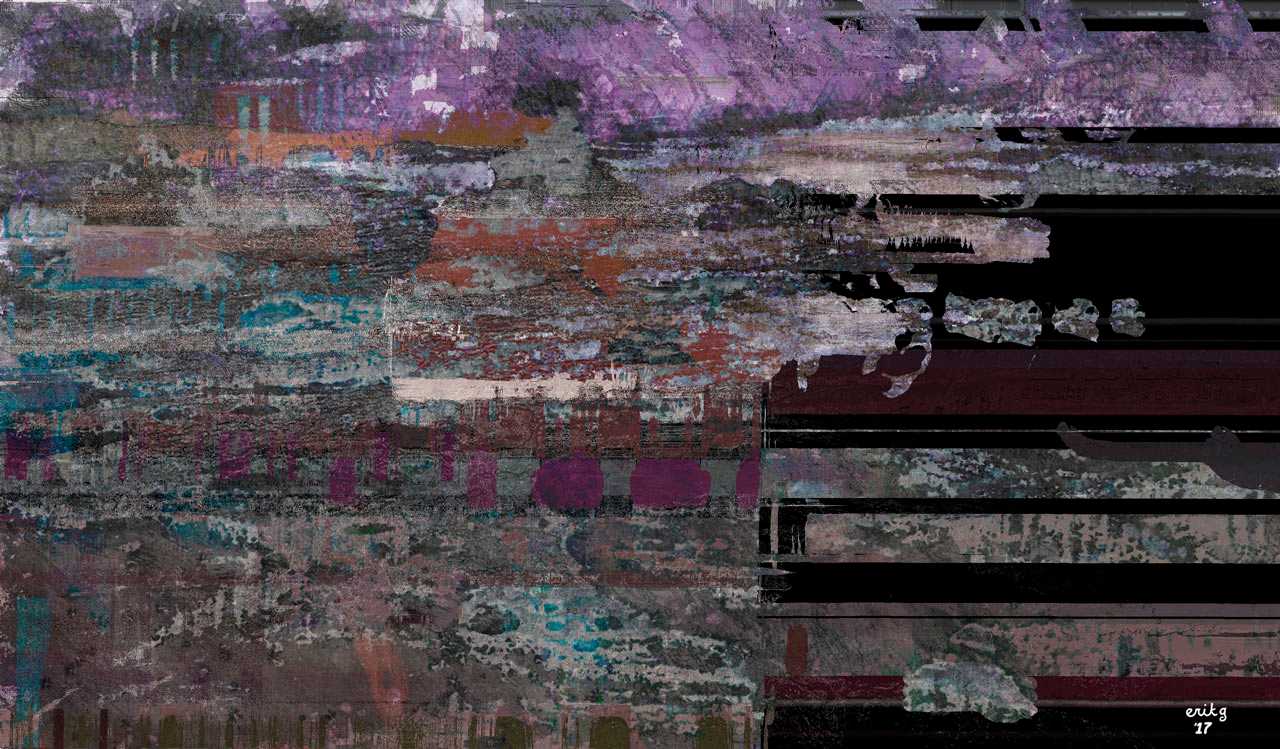Vision
My current digital fine art artwork explores the concept of a “natural field theory.” A basic premise is that when you view the world around you, the rods and cones in your eyes are only detecting one dimension of the energy present in the environment— that of reflected light that ranges through the visible spectrum. Living things and minerals may radiate energy in other fields that operate in a different temporal scale, and/or in wavelengths outside human vision. Just as infrared film allows us to see a heat-field view of things, the natural field concept explores a vision of the natural world that fuses reflected light with an envisioning of other energy fields.
Inspiration
Many of my works are inspired by the incredible range of textures and colors in nature, the spiritual impact of sacred places, and/or a lifelong fascination with maps and geography. Seeing other artists’ works at galleries or open studios (or better yet artists at work) is also inspiring.
Process
Some artists start an artwork with a vision of the end result in mind. Others start working with no particular goal, engaging in a voyage of discovery and exploration. For them, it is the serendipitous accidents that result in the most compelling work. So my process begins with setting up the right environment for serendipitous accidents to happen, and then trying to get out of the way.
After working awhile with a canvas, sometimes I am lucky to get to a point of transcendence where the painting stops being a painting, and becomes a totally believable world that I can imagine being in. Beyond that, there are turning points when suddenly the artwork becomes something I would have never anticipated, planned, or thought of. Those moments where something amazing is revealed are the highest point of the creative process. As Alberto Giacometti said, “The object of art is not to reproduce reality, but to create a reality of the same intensity.”
Working with digital media allows for exploring many alternate paths for one artwork. Whereas a traditional media artist throws away possibilities with every creative decision until the final arrangement dries on canvas, I explore many of the alternate paths, ending up with dozens of versions of the artwork. Usually one of the versions feels like it best exemplifies the vision mentioned above.
One of the things that has helped me is to develop a “System of the World” that guides your creative efforts (with due credit to Neal Stephenson’s book title). I see a system of the world including your inspiration, filters on what tools/ methods you use, and some sort of framework that ties it all together. For instance, most of my artwork is inspired by my passion for mountains, wilderness, and maps. There’s underlying structures that tie all my works together. I like to layer many different treatments together, and I also like to develop two canvases in parallel from the same inspiration, and something about that is freeing and allows one of them to be a disaster without ruining the other idea.
Apologies if I haven’t been able to answer your questions in a timely way. I am not a full-time artist so my spare time is rationed out amongst lots of threads.
Tools
I use a Wacom tablet with Synthetik Studio Artist and Photoshop.
Other
My last exhibit was at the wonderful Point B Studio in Port Orford, OR.
Ideas often come to me while doing unrelated things like riding the bus or bicycle. I read voraciously both fiction, non-fiction & articles which also percolate into facets like naming the artworks. Also my work is informed by having spent countless hours capturing the sense of place using cartography and photography.
I live & work in Portland, Oregon.




